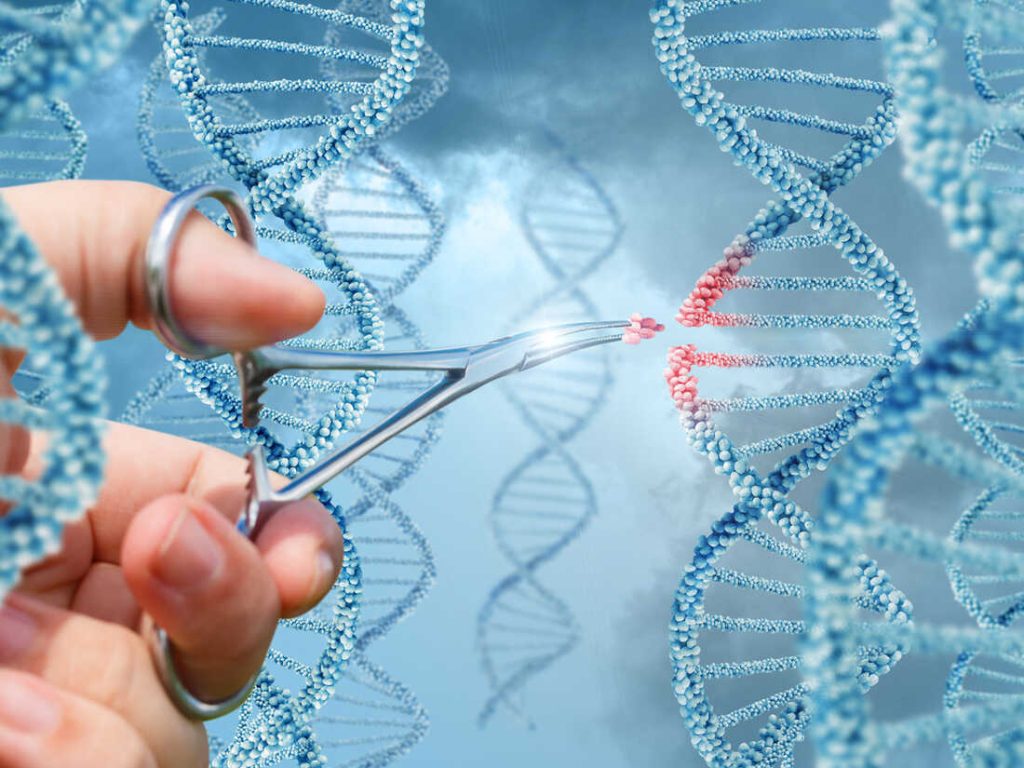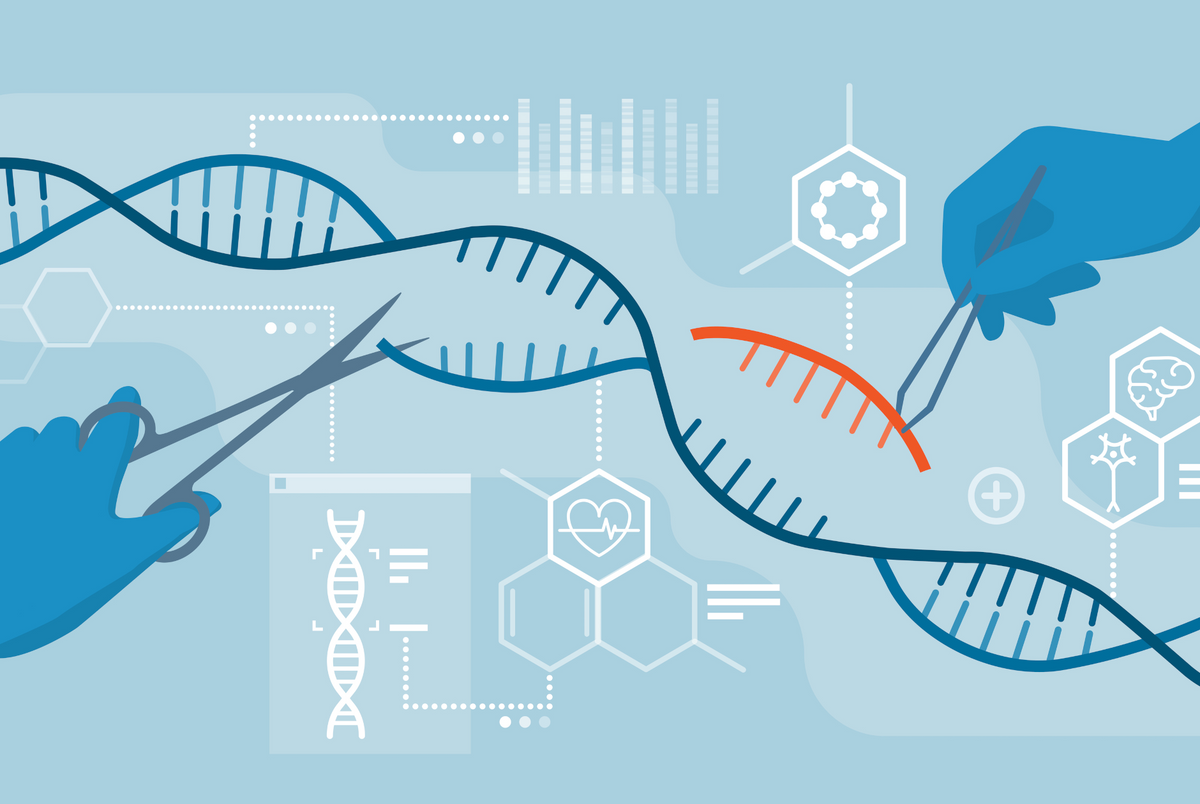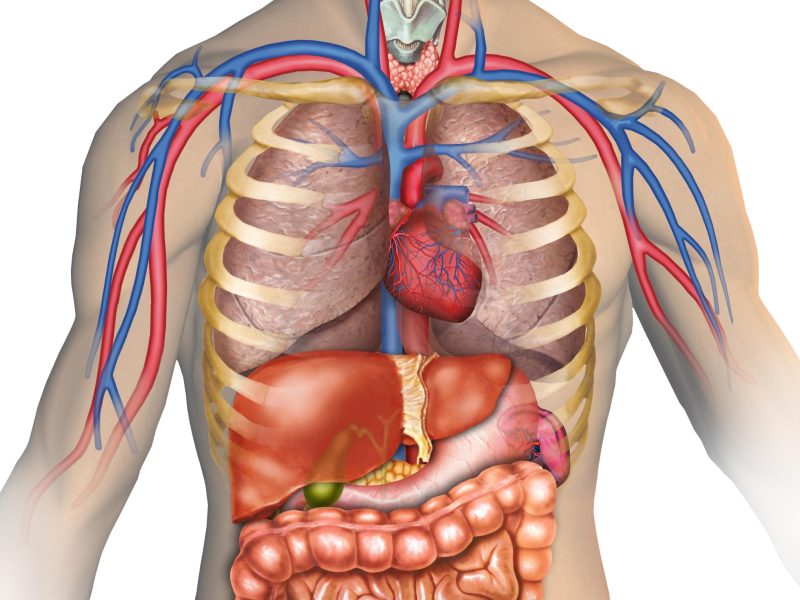by Vito Čapeta
This article was originally written in Italian. The Italian original is included at the bottom.
Gene editing and CRISPR are deeply affecting our reality nowadays. Gene editing consists of the direct repair of a wrong or mutated sequence, using highly precise “molecular scissors.” For this reason, gene editing is also known as DNA “cut and paste.” It cuts a DNA sequence at specific points and replaces it with specific genes, permanently modifying defective genes that are refractory to traditional therapies. The technique is simple, but it raises serious ethical questions because it can also be applied to somatic cells, germ cells, and embryos in the early stages of development, causing unwanted genetic effects, although experiments conducted on these have shown low efficiency. This “cut and paste” technique is commonly known by the acronym CRISPR: Clustered Regularly Interspaced Short Palindromic Repeats.
The Italian Bioethics Committee states that experimentation on gametes destined for conception and on embryos intended for implantation in the womb is not permissible until the necessary safety and technical efficacy conditions are met. The bioethics committee was favorable to in vitro experimentation on animals, but was divided on the opportunity to carry out in vitro research on “advanced” embryos from assisted fertilization cycles.
From what has been stated, we can say that this CRISPR methodology poses anthropological, normative, and ethical uncertainties that cannot be avoided because now the human genome can be manipulated in many ways, and this concerns the subjective identity of the human being, but also the future of humanity. For example, we can think of the possibility of modifying the genes of embryos, preventing lethal diseases that a child will inherit, such as cystic fibrosis, reducing future diseases such as cancer, preventing conditions such as blindness, altering abilities such as intelligence, strength, modifying eye color, and so on.
- Does this technique respect the criteria for safeguarding life and health?
- What should be the boundary between therapeutic interventions and “enhancement” interventions?
- Will we limit ourselves to replacing defective genes, or will we try to improve the genetic heritage by choosing somatic traits?
- Who will adopt the rules?
Therefore, the use of CRISPR is not ethically acceptable on germ cells before birth or on embryos. This technique of manipulation could not only destroy embryos but also cause errors in other segments of DNA. However, there is no doubt about its validity in the treatment of genetic diseases, cancer, and AIDS.

According to Dignitas Personae 26, the procedures used on somatic cells for strictly therapeutic purposes are morally permissible in principle. However, modifying the germline cells of a person, regardless of genetics, would be transmitted to any potential offspring resulting from the manipulation. At the current state of research, it is not morally permissible to act in a way that could cause possible harm to the resulting progeny.
In vitro fertilization raises all ethical objections, as stated in Dignitas Personae 27. Also, the issue of using genetic engineering for purposes other than medical treatment, such as improving and strengthening the genetic heritage, promotes a eugenic mentality, goes against the equality of all human beings, and uses arbitrary and debatable criteria to determine which modifications are positive. It could damage the common good and create a new type of human being, an ideological element in which man tries to take the place of his Creator.
Our path towards perfection is not found in radical enhancement or becoming post-human. It is the Creator God who makes us fully human. As Saint Irenaeus said, “the glory of God is man fully alive!” Certainly, in our society today, the culture of domination prevails. Man must dominate the earth, but not only the earth, but must also dominate himself even through technologies such as CRISPR (“temptation of perfection”).
Above all, we must cultivate in ourselves and others a contemplative gaze. This vision arises from faith in God of life, who created everything and every individual as a “wonder”. It is the gaze of those who see life in its deepest meaning, who perceive its absolute gratuitousness, its beauty, and its invitation to freedom and responsibility. It is the perspective of those who do not presume to possess reality but instead accept it as a gift, discovering in all things the reflection of the Creator and seeing in every person His living Image. The time has come for all of us to adopt this perspective, and with deep reverential fear, rediscover the ability to venerate and honor every person.
The new people of the redeemed can only respond with songs of joy, praise, and thanksgiving for the priceless gift of life, for the mystery of each individual’s call to participate through Christ in the life of grace and in endless communion with God our Creator and Father.

Italian version
Una realtà che ci tocca profondamente nei giorni nostri sono il gene editing e CRISPR. Il gene editing consiste nella riparazione diretta in modo amirato la sequenza errata o mutata. E ciò avviene con i “forbici molecolari” di massima precisione. Per questo il gene editing è nominato anche “taglia e cuci” del DNA. Taglia una sequenza del DNA in punti determinati e sostituisce con specifici geni, modificando permanente i geni difettosi refrattari alle terapie tradizionali. La tecnica è semplice però apre gravose questioni etiche poiché può essere applicata anche alle cellule somatiche, alle cellule germinali e agli embrioni nei primi stadi dello sviluppo, procurando gli effetti indesiderati a livello genetico, anche se esperimenti condotti su questi hanno mostrato una bassa efficienza. Questa tecnica “taglia cuci” è comunemente riconosciuta con appello di CRISPR: Clustered Regularly Interspaced Short Palindromic = “brevi ripetizioni palindrome raggruppate e separate ad intervalli regolari”
Il comitato di Bioetica italiano afferma che non è lecita la sperimentazione su gameti destinati al concepimento ed embrioni destinati all’impianto nel grembo materno finché non siano raggiunti le indispensabili condizioni di sicurezza e di efficacia tecnica. Comitato di bioetica fu favorevole alla sperimentazione in vitro sugli animali, ma si divise sull’opportunità di portare avanti la ricerca in vitro su embrioni “avanzati” da cicli di fecondazione assistita.
Da quanto affermato possiamo dire che questa metodologia CRISPR pone incognite antropologiche, normative ed etiche che non possono essere eluse poiché ormai il genoma umano può essere manipolato in molteplici modi, e ciò riguarda l’identità soggettiva dell’essere umano, ma pure il futuro della umanità. Pensiamo ad esempio sulla possibilità di modificare i geni di embrioni, prevenire malattie mortali che un bambino erediterà, come ad esempio la fibrosi cistica, riduzione di malattie future come il cancro, prevenire condizioni come cecità, alterare la capacità come intelligenza, forza, modificare il colore degli occhi…
- Questa tecnica rispetta i criteri di salvaguardia della vita e della salute?
- Quale dev’essere il confine tra interventi terapeutici e interventi di “potenziamento”?
- Ci si limiterà a sostituire i geni difettosi oppure si tenterà di migliorare il patrimonio genetico con la scelta di caratteri somatici?
- Chi dovrà dottare le regole?
Dunque l’uso del CRISPR non è accettabile eticamente sulle cellule germinali prima della nascita e sugli embrioni, cioè il passaggio dagli animali all’uomo, anche perché questa tecnica di manipolazione oltre che distruggere gli embrioni potrebbe causare errori in altri segmenti del DNA, mentre non ci sono dubbi sulla validità nella cura di patologie genetiche compromessi tumori e AIDS.
Dignitas personae n, 26 afferma che le procedure utilizzate su cellule somatiche per rigorosamente scopi terapeutici sono in linea di principio moralmente leciti. Terapia cellulare della linea germinale … Qualunque sia la genetica le modifiche vengono effettuate sulle cellule germinali della persona sarà trasmessa a qualsiasi potenziale prole…allo stato attuale della ricerca , non lo è moralmente lecito agire in un modo che può causare possibile danno alla progenie risultante. Nella fecondazione in vitro…si scontra con tutte le etiche obiezioni. In più nel numero 27 dice che la questione dell’uso dell’ingegneria genetica per scopi diversi dal trattamento medico… migliorare e rafforzare il patrimonio genetico. Mostrare una certa insoddisfazione o addirittura il rifiuto del valore dell’essere umano come finito. Promuovere una mentalità eugenetica. Contrasto con uguaglianza di tutti gli esseri umani. Criteri arbitrari e discutibili per decidere quali le modifiche sono positive. Danneggiare il bene comune. Creare un nuovo tipo di essere umano è un elemento ideologico in cui l’uomo cerca di prendere il luogo del suo Creatore.
Il nostro cammino verso la perfezione non si trova nell’aumento radicale né nel renderci post-umani. È il Dio Creatore che ci rende pienamente umani. Come San Irineo disse che la gloria di Dio è l’uomo pienamente vivo! Certamente nella nostra società oggi domina la cultura del dominio. Uomo deve dominare la terra, ma non solo la terra, ma deve dominare sé stesso anche tramite, per esempio, tramite le tecnologie come CRISPR (“tentazione di perfezione”).
Occorre soprattutto coltivare in noi stessi e negli altri, uno sguardo contemplativo. Tale visione nasce dalla fede in Dio della vita, che ha creato ogni cosa e ogni individuo come “meraviglia”. È lo sguardo di chi vede la vita nel suo significato più profondo, che ne coglie l’assoluta gratuita, la sua bellezza e il suo invito alla libertà e alla responsabilità. È la prospettiva di coloro che non lo fanno presumere di impossessarsi della realtà ma accettarla invece come un dono, scoprendo in tutte le cose il riflesso del Creatore e vedendo in ogni persona il suo vivere Immagine. È giunto il momento per tutti noi di adottare questa prospettiva, e con profondo timore reverenziale riscoprire la capacità di venerare e onorare ogni persona. Il nuovo popolo dei redenti non può che rispondere con canti di gioia, lode e ringraziamento per il dono inestimabile della vita, per il mistero di ogni chiamata dell’individuo a partecipare attraverso Cristo alla vita di grazia e ad un’esistenza di comunione senza fine con Dio nostro Creatore e Padre.


